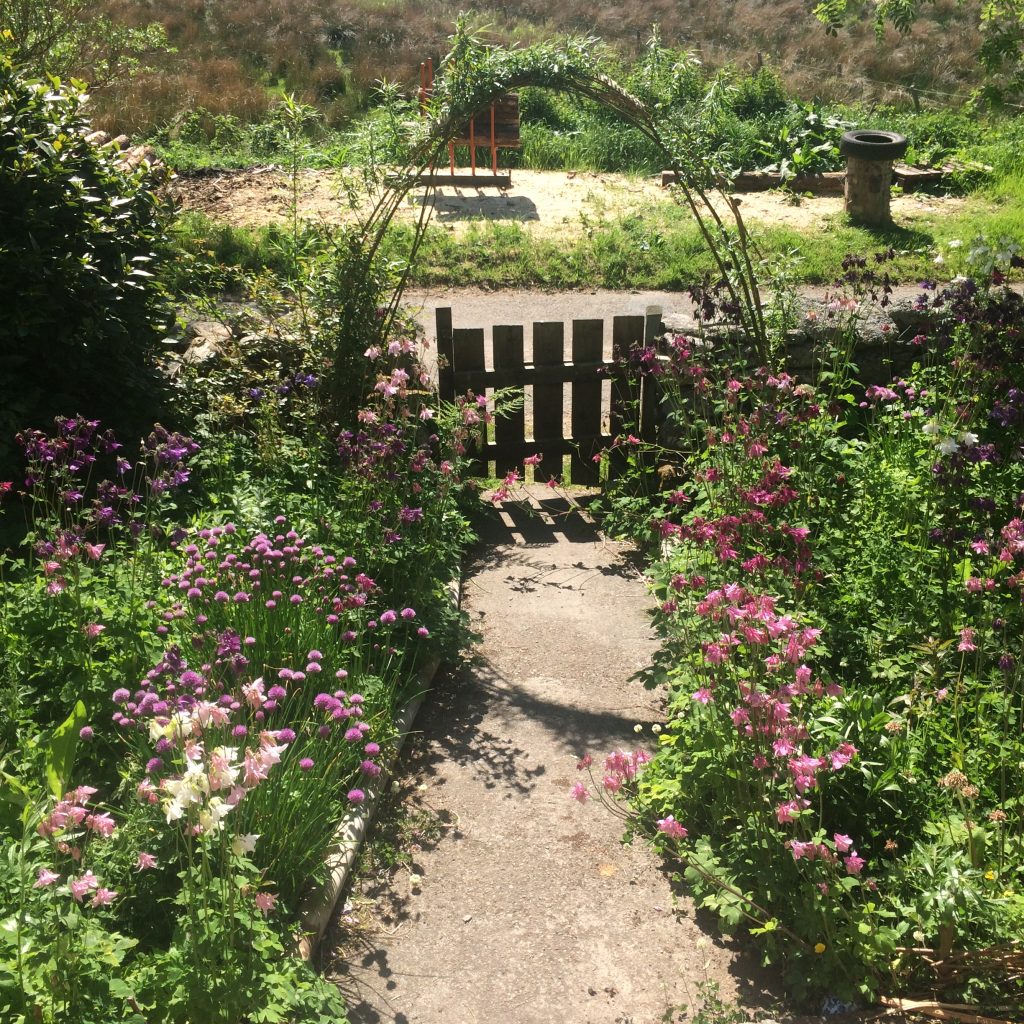Our croft is approximately 8 acres, in a small village called Skerray, right in the middle of the Scottish north coast. We are just a few hundred metres from the sea, with a kilometer long sandy beach to the east, and small harbour to the west. But the croft itself is relatively sheltered, in a small valley.
(Crofting is a Scottish tenant system whereby we, as crofters have a lifelong tenancy of the land, and also have our house located on the croft. It was originally a subsistence form of farming.)
Our croft is split into two separate areas. We have a 2 acre strip of land above the house. This is the land that we use the most, and it was planted with trees, fruit bushes and shrubs by the previous tenant, who grew vegetables and kept hens and ducks. We are largely continuing his work, but changing how we manage the land.
About 100m down the road is the second part to our croft, in a very wet valley. It is understood that this used to be a loch or swamp, and was drained to create the crofts. It is low lying and the drains have not been maintained for a very long time, so we have to accept the bogginess and work with it instead! Here we will be adding to the existing trees with wet-loving species such as alder and willow, grown mainly for firewood.
Our aims for the land are continually changing as we observe and learn. We will never use any chemicals, and are trying to minimise any external inputs to the land, so that it becomes a closed system for nutrients. Everything we do aims to build soils and improve biodiversity, working with nature.
Basketry Willows
We intend to grow as much of the willow and other basketry materials as we can on the croft, so are dedicating quite a bit of space to this, starting in 2020. Willows will be planted into biodegradeable membranes, rather than the standard plastic used by most growers. It is likely Aurore will use all of the material, but may also sell any surplus that we have.
Tree Nursery
There are very few growers of trees in the far north, and with our harsh climate, it makes sense to plant trees of the correct origin and provenance. The tree nursery will be a small operation, growing a few thousand trees a year for sale locally and online, focusing mainly on native species.
Firewood Coppice
Our “Rayburn” stove burns wood and heats our house, does all of our cooking and provides us with hot water. We aim to be completely self sufficient in firewood within 10 years, and to do this will grow trees on a coppice rotation. We’re currently experimenting with different species, but are fairly limited as the land we have available is very wet. If we ever had any surplus, then we’d use this to sell locally, or make charcoal. The brash (smaller branches and twigs) from the trees are used for dead hedging, chipping to use as mulch in Ramial Chipped Wood vegetable beds, or left in situ to breakdown and improve soils in the woodland.
Vegetable & Fruit Growing
We use a “no dig” system for growing vegetables, mainly in raised beds, and make our own compost, as well as using seaweed and ramial chipped wood for mulch. Growing food in the far north has its own challenges and our aim is to save seed from successful varieties, as well as focusing on perennial edible plants. The croft has many wild pockets and is full of brambles, raspberries, fruit trees and other edible plants. We will add to this, creating a “food forest” and relying less on annual vegetables.
Wild Space
Hedges, wildflower meadows, ponds and piles of deadwood are not separate to our main croft products, they are entirely part of it, and very little of our land is kept “tidy”. We just mow paths for access and around vegetable beds, and sythe our small meadow to promote wildflowers. We intend to add un-managed wild bee hives in future too.
Hens & Other Livestock
We have a small flock of mixed breed hens who roam the whole croft as they please, but are locked away securely at night. They forage for most of their food and we supplement them with grains too, which we’d like to try growing ourselves in the future. We occasionally have surplus eggs which we sell at the croft gate, and usually raise a few broods of chicks a year if hens go broody. We always seem to get cockerels though so they are left until they reach maturity at which point they become Sunday roasts. This is the only chicken we will eat all year! At the moment we don’t have any other livestock on the croft.









